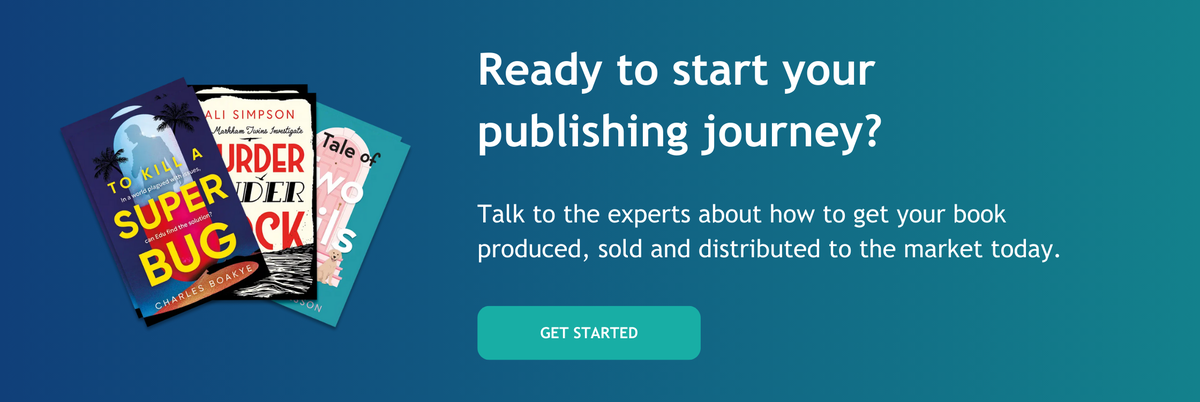
21st November, 2025
7 min read
Professional vs Author-Created Indexes: Which Route is Best for You?
Written by:
Lauren Stenning
If you’re writing a non-fiction book, it’s essential to consider adding an index to help readers find the specific information they may be looking for. As Nancy Mulvany says in her book Indexing Books (2005):
“Information that cannot be located might as well not exist.”
You want readers to get the most out of the book you’ve spent the time and effort writing and publishing! If you’ve written any kind of information-based book, for example a biography, a self-help book or an academic subject book (science, history, politics etc), chances are, your readers will appreciate an index.
What Exactly Is an Index and How Is It Created?
An index is a list of names and/or topics that are referred to in the book, which can usually be found at the end of the book listed alphabetically. It acts as a practical tool for the retrieval of information, as readers can search for the specific name/topic they’re interested in and find the corresponding page number(s) where this name/topic occurs. Indexes essentially create order out of chaos.
Indexes are created first by reading the text and picking out key terms for the index. The indexer must have appropriate subject knowledge for the type of book they’re indexing so that they understand the subject matter and can create an intelligent index. The crucial part of creating an index is choosing which terms to index, so the indexer will first and foremost have readers in mind when doing this. The index is usually created using specialist indexing software, such as SKY Index or Cindex.
Indexing Options for Self-Publishing Authors
So you’ve decided that adding an index to your book will aid its information-sharing purpose and improve the reading experience, but how do you go about creating one? It’s an entirely different skill to writing the book itself, but you as the author know the subject matter best, right? Whether to embark on this no doubt complicated and potentially daunting task yourself or use a professional indexer is a big decision, so let’s delve into the implications of each.
Using a professional
If you choose to hand the job over to a professional indexer, you will first and foremost gain the peace of mind that your book will have a user-friendly, consistent index that’s sufficiently detailed and has a variety of entry routes, e.g. double entries and/or cross-references. You will of course be paying for the privilege, so it’s important to factor this into your self-publishing budget. How much it costs to self-publish your book will depend on the route you take and the specifications of the book itself. Adding a professionally created index can be expensive, but it definitely has its benefits.
A professional indexer has the advantage of being both impartial and objective in their approach to creating an index for your book. As the author of the book, you run the risk of choosing subject matter you think is the most important/interesting according to the narrative you’ve crafted, rather than what readers realistically want to read about. A professional indexer will have sufficient knowledge of the subject matter to decide which specific subjects to index without bias. They will also choose terminology that the target audience is likely to be familiar with, rather than terms you as the author may use more frequently. These choices would no doubt be subconscious if you were creating the index yourself, but professional indexers make such choices consciously, therefore producing a far more user-friendly index.
DIY
Creating your own index, as with any aspect of self-publishing you learn to do yourself, could be a very satisfying experience that leaves you feeling highly accomplished, especially if you’re the type of person who finds joy in organising and arranging things! You can find out if you might be good at indexing by trying the Society of Indexers’ pre-enrolment exercises. If you’re prepared to invest the time in learning how to create a good index, the Society of Indexers’ Indexing Basics workshop is a good place to start. Creating your own index would then be a viable option, and you’d have gained skills you could use again in the future. This option would of course have time and financial considerations, so perhaps ask yourself, do I want to invest in myself or in my book? If upskilling isn’t important to you, your money may be better spent on a professional indexer.
Attempting to create an index yourself without the relevant training is bound to produce an unusable index that may as well not be there. A good indexer will consider which alphabetisation system to use, how to arrange subheadings and how best to index proper names. These aspects are all key to effective information retrieval and, without careful consideration, the index may appear messy and will be difficult to use.
Additionally, the majority of indexes will require some cross-references to aid fast, simple information retrieval, and these need careful consideration too. For example, while the term “the Rock” may not appear very often in a film book with a section on Dwayne Johnson, this may well be a term a reader seeks out in an index, so it would be useful to include it as a see cross-reference. This is a good example of how an indexer anticipates the user’s needs and is a result of training and experience. Trying to create cross-references yourself with no prior training will likely end up in unnecessary and circular cross-references as well as missing out ones that could be invaluable to the reader.
Which Approach to Indexing Should You Opt For?
As previously mentioned, a poorly created index may as well not be there, as it’s no help to readers, so the most important consideration should be: can I create an effective, unbiased and useful index myself? If you can confidently answer ‘yes’, then go for it, but if you have any doubts, you’ll be better off opting to use a professional. Although authors can sometimes produce good indexes to their own books, indexing skills are developed through training and experience. A professional with the right subject knowledge and professional indexing software, coming to the text with fresh eyes and with the reader's needs in mind, will certainly do a much better job. For more information on DIY vs professional indexing, check out the Society of Indexers’ leaflet.
Index Styles to Consider
Whether you’re creating your own index or enlisting the help of a professional, it’s worth considering the different styles of index and which ones may best suit your book. It’s a good idea to keep style choices consistent over multiple publications (if you’re publishing multiple books), and studying indexes in other books in your genre may help guide you towards reader preferences and more popular style trends.
Alphabetisation
It’s simple enough to style an index alphabetically, right? Well, actually, it might not be as simple as you first thought, as there are in fact two different alphabetisation systems that can be used: word by word, or letter by letter. Each has certain advantages and disadvantages and tends to be favoured by different types of book.
Subheadings
While main headings are arranged in alphabetical order, subheadings can be filed chronologically. This style is often found in history books, where different historical periods are covered.
Proper names
Should proper names be indexed by first name, surname, or title? How should you distinguish between two people with the same name? Whichever style you choose, consistency is crucial.
Cross-references
See also cross-references can either be placed after subheadings or in brackets after the main heading, depending on how big/complicated the index is.
Locators
One style is to give locators in full, e.g. 122–129, another is to elide them, e.g. 122–9. But even the elision style can vary between style guides and publisher house styles. There are also several options for how to lay them out next to headings, e.g. with two spaces or a comma and a space.
As you can see from the above, there are many style considerations when creating an index. Professional indexers will usually have a default style, so you won’t need to worry about making these kinds of decisions, but if you’re creating your own, it would be a good idea to come up with your own style guide to adhere to.
How Can Troubador Help with Indexes?
We often have authors enquiring about indexes for their books, as this can be a complicated task to do themselves. We are therefore trialling our own indexing service for authors, which is intended to make the process easier and produce a more professional end result. If you’re interested in using our service, do get in touch with Lauren (lauren_stenning@troubador.co.uk), who will provide you with a quotation and answer any questions you may have.
Summary
Adding an index to your book enhances its readability, but only if it’s done right. Using a professional indexer virtually guarantees this, but doing it yourself provides an opportunity to learn and grow your skills as a self-publishing author. As with every part of the self-publishing process, it’s important to understand your own capabilities and limitations, and know when to turn to the experts to ensure your book is published to a professional standard.









